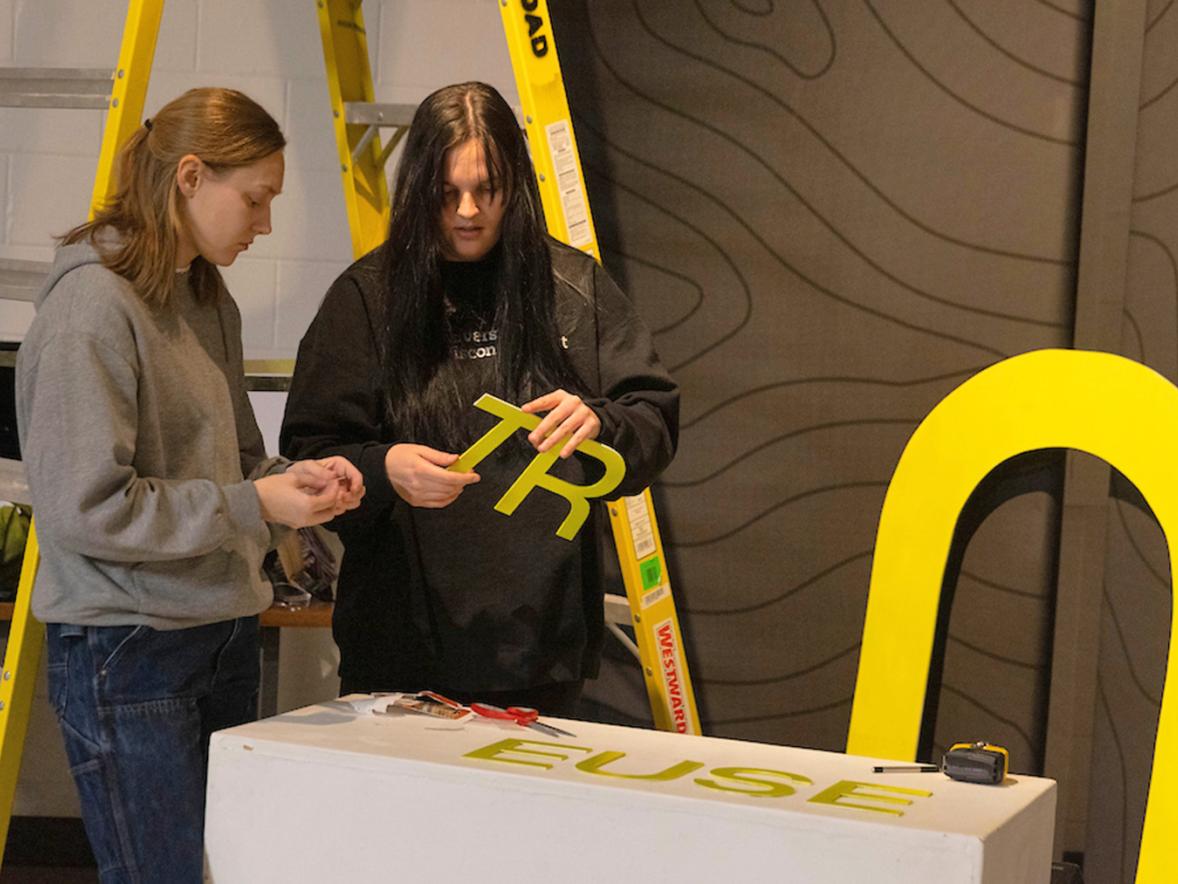Manufacturing engineering, mechanical engineering and plastics engineering juniors and seniors in the Jarvis Hall Tech Wing prepare for their first lab experiment in Professor Vince Wheeler’s Fluid Mechanics class.
“The labs here at Stout are as close to what you’ll see in the real world. The skills I’ve acquired prepare me for real world challenges in engineering,” said Aidan Hafner, a fourth-year mechanical engineering student from Deerbrook.
Challenges like the one that Wheeler is about to present to his students: How do you use a handful of common laboratory items and a little engineering know-how to find the density and viscosity of an unnamed bright blue, thick and sticky liquid?
What exactly is that liquid? Keep reading...
“Fluid Mechanics is the study of liquids and solids in motion. It gives engineers the tools to quantitatively understand how everyday and future technologies work, such as hydroelectric dams, irrigation systems and aircraft wings,” Wheeler said.
“We look at what fundamental properties define how a fluid behaves; here, density and viscosity. The lab they undertake not only reinforces what these properties are and how they are important, but also how to design an experiment and handle experimental uncertainty,” he added.
Wheeler introduces his students to the experiment station, a fluid properties apparatus. He shows them the tools available for their experiment—a scale, a weighted vial and beaker of the blue liquid, a long glass cylinder, stainless steel ball bearings and a caliper.
They’re meant to find the density of the mysterious fluid by weighing then measuring how deep the vial floats in the fluid. They find the viscosity by measuring how long it takes the ball bearing to fall through the fluid. He’s hoping they remember lab lessons and theoretical concepts from previous courses, especially consequences of Newton’s second law of motion: Acceleration times the mass of an object must equal the net force on the object.
He intentionally left that out of the instructions. Instead, he reminds them of topics they covered in previous courses and introduces them to the idea of uncertainty and how to quantify it as an engineer.
Then, working in small groups, the students are left to their own devices to figure out each tools’ function in the experiment and problem-solve to find a solution.
Wheeler checks in on the teams’ progress occasionally, knowing that while failure leads to new methods and discoveries, communication is essential when working in a team.
“I’m interested in numbers and the way things work,” said Tucker Haakonson, a mechanical engineering junior from St. Cloud, Minn. “At Stout, you get a lot of experiences that you wouldn’t have anywhere else. Our labs set you up for success in your internships and career without skipping a beat.”
“The labs and courses, like Machine Component Design, are realistic to what you see in industry and prepared me for my two internships as a design engineer with Bobcat and an engineering intern at Oxbo,” added Caleb Hickey, a fourth-year mechanical engineering student from Appleton.
The small groups attempt different methods, weighing the beaker of blue liquid, weighing the ball bearings, measuring the cylinder with the caliper. Will they remember the equation from previous courses? Will they remember to communicate their failures and successes to help each other through the process?
All that we know for certain (with a little hint from Wheeler) is that the blue liquid is dyed corn syrup. Not that this is helpful for finding the solution. But it’s science so sweet, you can eat it.





